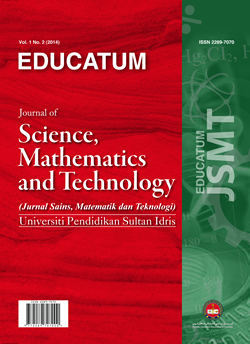Exploring Information Technology Industry Programming Language Trends with Non-Negative Matrix Factorization Topic Modelling
DOI:
https://doi.org/10.37134/ejsmt.vol10.1.5.2023Keywords:
Topic Modelling, NMF, T, Industry, ProgrammingAbstract
The study aimed to determine the preferred programming language among information technology professionals using non-negative matrix factorization topic modelling technique. The results showed that the majority of participants were software developers and programmers who commonly used C#, Java, and Python, and agreed that Java, C, or C++ would be the best language to start with when learning programming. The application of topic modelling revealed key themes such as online video tutorials as effective learning resources, hands-on activities as key to learning programming, importance of feedback, effective teaching strategies, and problem-solving skills as crucial for success in programming. Results of the study may serve as baseline data for the improvement of curricular offerings.
Downloads
References
Mercado, P. A., Granadino, G. A., Pasco, E. M., & Rosete, M. A. (2021). The Impact of ICT on Service Sector’s Productivity and Employment in the Philippines. Journal of Economics, Finance and Accounting Studies, 3(2), 288-299.
Adene, G., Mbonu, C. E., Alade, S. M., & Mba, C. J. Programming Language Preference among Undergraduate Students in Nigeria.
Preston, R. (2020). Why Demand of Software Engineers Is High (Plus Job Tips). Retrieved from https://www.indeed.com/: https://www.indeed.com/career-advice/finding-a-job/demand-of-software-engineers
Scott, C. (2022). Demand for software developers doubled in 2021. Retrieved from https://www.infoworld.com/: https://www.infoworld.com/article/3654480/demand-for-software-developers-doubled-in-2021.html
Fernández, E., & Rennolds, N. (2022). Jobs in these 10 industries will grow most in demand in 2022, from 'behavioral health' to cybersecurity. Retrieved from https://www.businessinsider.com/: https://www.businessinsider.com/10-jobs-that-will-be-growing-in-2022-have-openings-2021-12
Burning Glass. (2016). Why Should Students Learn to Code? Retrieved from Oracle: https://academy.oracle.com/pages/infographics/why-learn-code.html
Fedorenko, E., Ivanova, A., Dhamala, R., & Bers, M. U. (2019). The language of programming: a cognitive perspective. Trends in cognitive sciences, 23(7), 525-528.
CHED Memorandum Order 25 series of 2015
Zhang, J. (2016). Selection and Improvement of Computer Programming Language. ISME 2016 - Information Science and Management Engineering IV (ISME 2016), pages 242-245
Creswell JW, Clark VL. 2017. Designing and conducting mixed methods research. 2nd ed. Thousand Oaks. CA:SAGE Publications; 2017. p. 1-520.
Alburo, H. R., Romana, C. L. C. S., & Feliscuzo, L. S. (2021). Sentiment analysis of the academic services of ESSU salcedo campus using plutchik model and latent dirichlet allocation
S. Vijayarani, M. J. Ilamathi, and M. Nithya, “Preprocessing techniques for text mining-an overview,” International Journal of Computer Science & Communication Networks, vol. 5, no. 1, pp. 7-16, 2015
C. Ramasubramanian and R. Ramya, “Effective pre-processing activities in text mining using improved porter‟s stemming algorithm,” International Journal of Advanced Research in Computer and Communication Engineering ,vol. 2, issue 12, December 2013.
George, S., & Vasudevan, S. (2020). Comparison of LDA and NMF topic modeling techniques for restaurant reviews. Indian J. Nat. Sci, 10 Algorithm. International Journal of Recent Technology and Engineering, 9(6), 176-183.
J. Demsar, T. Curk, A. Erjavec, C. Gorup, T. Hocevar, M. Milutinovic, M. Mozina, M. Polajnar, M. Toplak, A. Staric, M. Stajdohar, L. Umek, L. Zagar, J. Zbontar, M. Zitnik, and B. Zupan, “orange: data mining toolbox in python,” Journal of Machine Learning Research, vol. 14, pp. 2349−2353, 2013.
Cass Stephen. (2022, August 23). Top Programming Languages 2022. Retrieved from IEEE Spectrum: https://spectrum.ieee.org/top-programming-languages-2022
Statista. (2022, August 9). Most used programming languages among developers worldwide as of 2022. Retrieved from Statista: https://www.statista.com/statistics/793628/worldwide-developer-survey-most-used-languages/
Rodrigues, G., Monteiro, A. F., & Osório, A. (2022). Introductory Programming in Higher Education: A Systematic Literature Review. In Third International Computer Programming Education Conference (ICPEC 2022). Schloss Dagstuhl-Leibniz-Zentrum für Informatik.
Zhan, Q., Wang, J., Pan, X., Ding, Y., & Liu, Y. (2022). Teaching Model Design of Computer Programming Courses for Digital Media Technology Students. Wireless Communications and Mobile Computing, 2022, 1-5.
Kadar, R., Wahab, N. A., Othman, J., Shamsuddin, M., & Mahlan, S. B. (2021). A study of difficulties in teaching and learning programming: a systematic literature review. International Journal of Academic Research in Progressive Education and Development, 10(3), 591-605.
Maziriri, E. T., Gapa, P., & Chuchu, T. (2020). Student Perceptions towards the Use of YouTube as an Educational Tool for Learning and Tutorials. International Journal of Instruction, 13(2), 119-138.
Okechukwu, O., Orie, M., Eziokwu, P., Onovo, N., Okeke, H., & Ukeh, B. (2020). Integrating YouTube Tutorials in teaching of Computer Programming course: Effects on Students’ Achievement and Interest. International Journal of Integrated Research in Education (IJIRE), 111-117.
Kadriu, A., Abazi-Bexheti, L., Abazi-Alili, H., & Ramadani, V. (2020). Investigating trends in learning programming using YouTube tutorials. International Journal of Learning and Change, 12(2), 190-208.
von Hausswolff, K. (2022). Practical thinking in programming education: Novices learning hands-on (Doctoral dissertation, Acta Universitatis Upsaliensis).
Bosse, Y., Redmiles, D., & Gerosa, M. A. (2019, July). Pedagogical content for professors of introductory programming courses. In Proceedings of the 2019 ACM Conference on Innovation and Technology in Computer Science Education (pp. 429-435).
Yang, S., Paul, S. D., & Bhunia, S. (2021). Hands-On Learning of Hardware and Systems Security. Advances in Engineering Education, 9(2), n2.
Brown NCC, Wilson G (2018) Ten quick tips for teaching programming. PLoS Comput Biol 14(4): e1006023. https://doi.org/10.1371/journal.pcbi.1006023
Alammary, A. (2019). Blended learning models for introductory programming courses: A systematic review. PloS one, 14(9), e0221765.
Fueiredo, J., & García-Peñalvo, F. J. (2020, April). Increasing student motivation in computer programming with gamification. In 2020 IEEE Global Engineering Education Conference (EDUCON) (pp. 997-1000). IEEE.
López-Pernas, S., Gordillo, A., Barra, E., & Quemada, J. (2019). Examining the use of an educational escape room for teaching programming in a higher education setting. IEEE Access, 7, 31723-31737.
Nouri, J., Zhang, L., Mannila, L., & Norén, E. (2020). Development of computational thinking, digital competence and 21st century skills when learning programming in K-9. Education Inquiry, 11(1), 1-17.
Skolverket. (2017).Få syn på digitaliseringen på grundskolenivå. Commentary material. Retrieved from https://www.skolverket.se/publikationer?id=3783
Koehler, J. (2019, May 1). 5 Skills to Help You Thrive in Computer Programming. Retrieved from University of Arkansas Grantham: https://www.uagrantham.
Downloads
Published
How to Cite
Issue
Section
License
Copyright (c) 2023 Niel Francis Casillano, Karen Cantilang

This work is licensed under a Creative Commons Attribution-NonCommercial-ShareAlike 4.0 International License.





